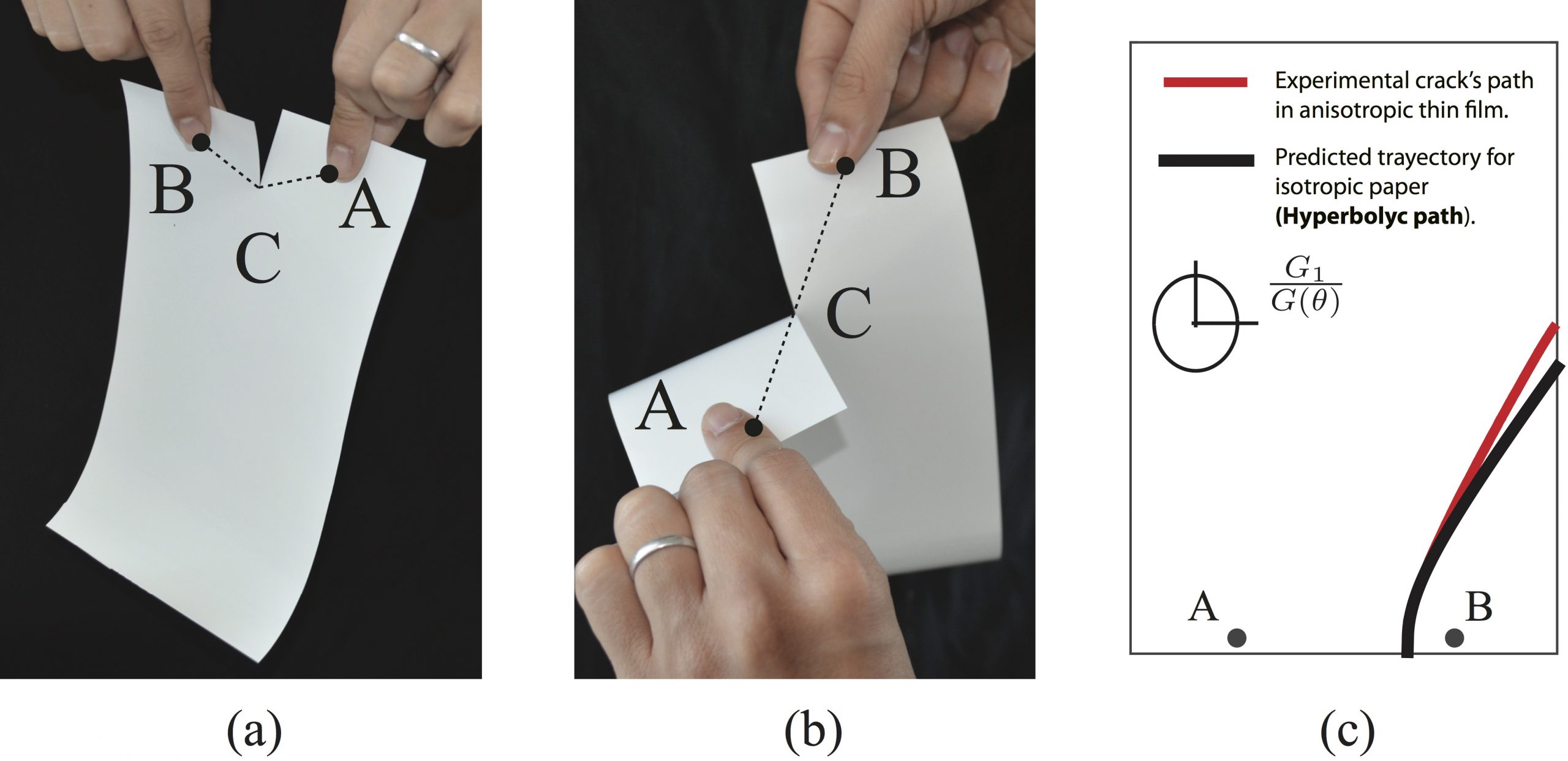previous post
Tearing paper is a typical exercise widely practiced in different contexts, the simplest experiment consists of pulling the paper from two points that, as the paper tears, they separate (see Figure 1).

Figura 1. Scheme of fracture propagation
For materials of isotropic fracture energy, we show that an effective tearing vector predicting the direction of fracture propagation can be defined. In the flat sheet state, this vector is the perpendicular bisector of the vectors joining the pulling points and the fracture tip. The tearing vector is then differently oriented than the pulling direction. The ‘‘maximum energy released rate’’ criterion (MERR) predicts a crack path that is tangential to the instantaneous tearing vector, or equivalently trajectories that are hyperbolas whose focal points are the pulling points. However, experiments indicate that fracture paths rarely follow this prediction because any small anisotropy existing in real thin sheets deviates the crack path from being parallel to the tearing vector. If you want to know how can affect the effect of the anisotropy in the trayectory of crack’s path you can check these articles: